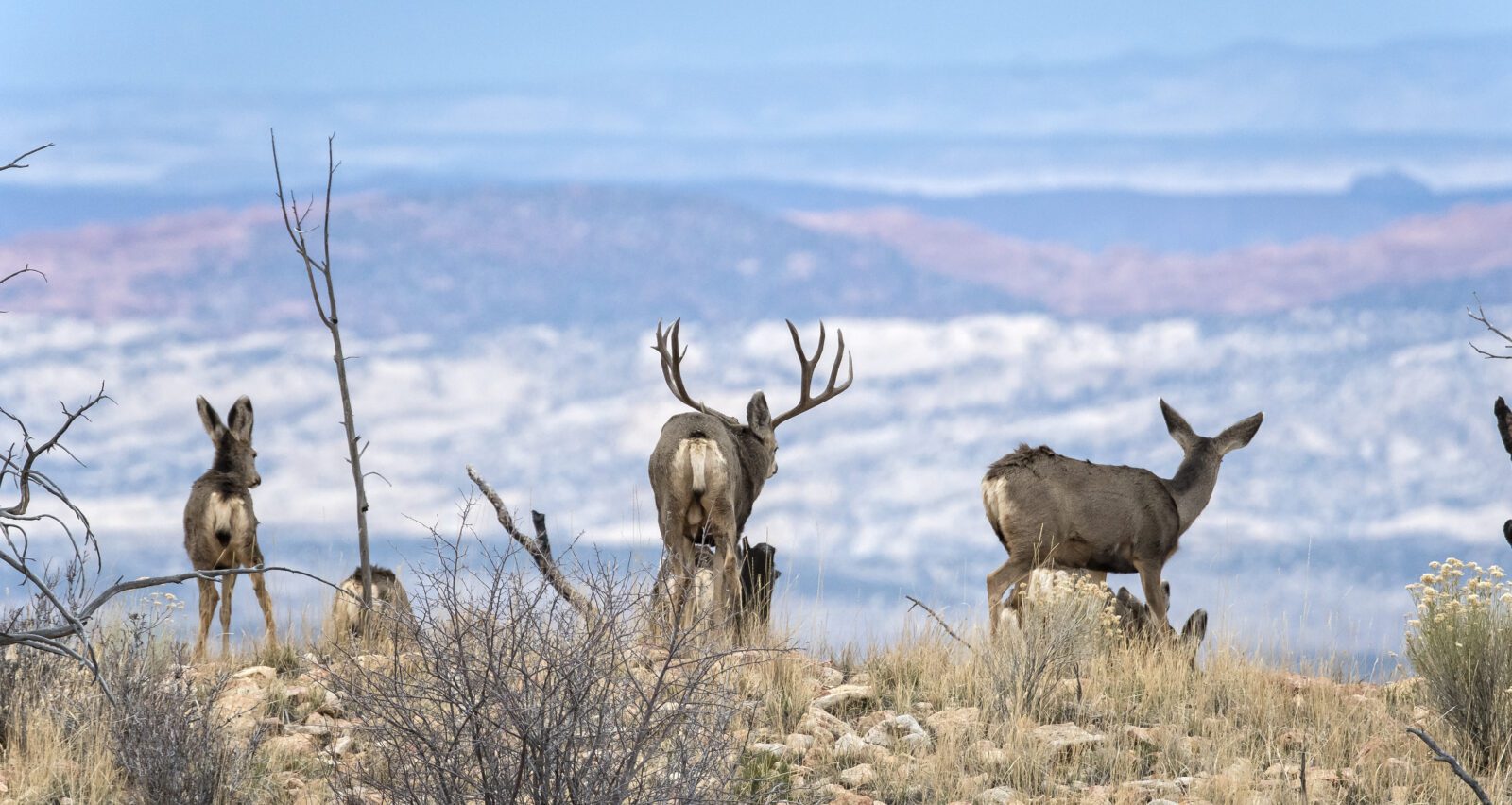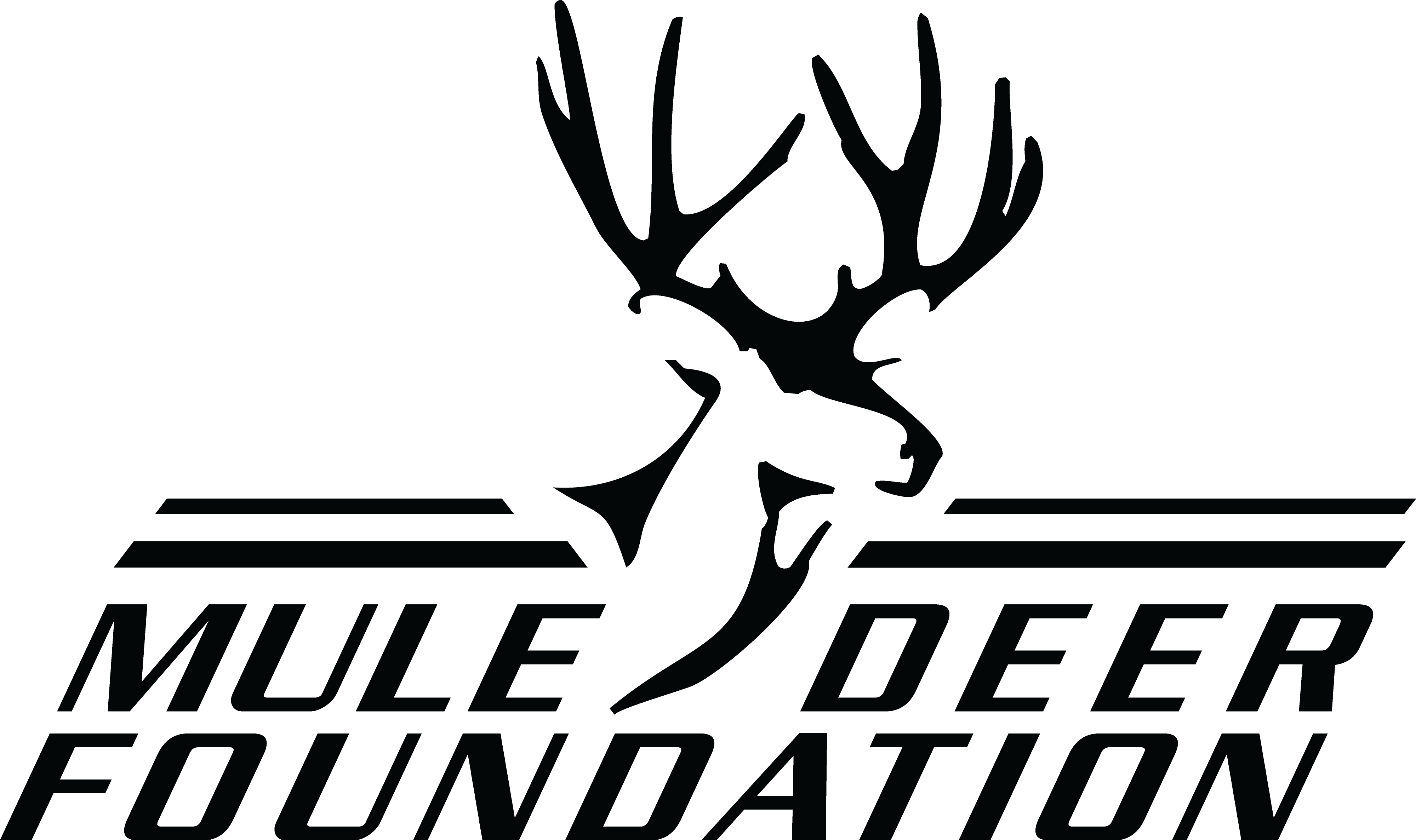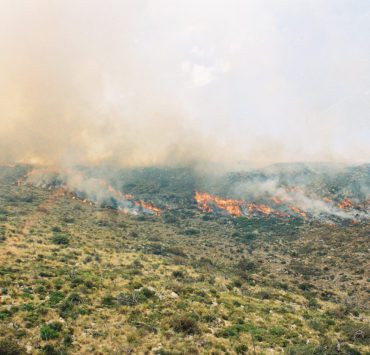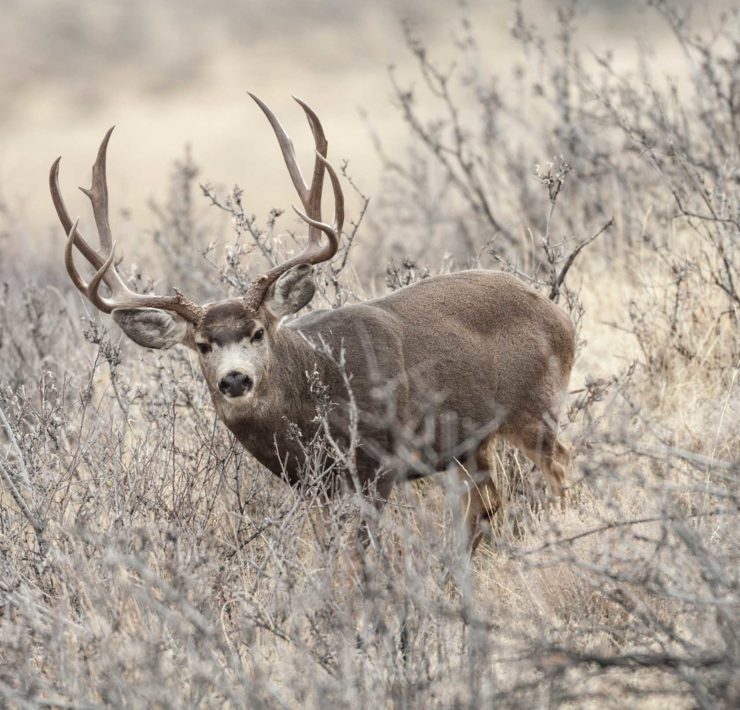Reading Sign: Tracks, Beds, and Rubs in Mule Deer Country

By: Trevor J Hubbs
When hunting mule deer, understanding and interpreting the signs they leave behind is one of the most valuable skills you can develop. Tracks, beds, and rubs are clues that tell you not just where deer have been, but also their habits, travel patterns, and even what kind of deer you might encounter. Developing the ability to read sign effectively can turn an ordinary hunt into a successful one.
1. Tracks: Following the Footsteps
Mule deer tracks are easy to recognize once you know what to look for. Their hooves are distinctly pointed, with the tips slightly spread apart. Depending on the terrain and the deer’s movement, tracks can reveal a lot:
- Size Matters: Larger tracks usually indicate bucks, while smaller tracks may belong to does or younger deer.
- Direction and Speed: Closely spaced tracks indicate a slow-moving deer, often feeding or traveling cautiously. Wide-spaced tracks indicate a fast-moving deer, possibly fleeing.
- Patterns: Mule deer often travel in single-file lines, especially in narrow trails or thick cover. Multiple tracks together often indicate bedding or feeding areas.
Tips for tracking:
- Look for fresh tracks in soft soil, mud, or snow.
- Pay attention to trail intersections — these are often high-traffic areas.
- Compare front and rear tracks; front hooves are usually larger and more rounded, while rear hooves are narrower.
2. Beds: Where Deer Rest
Deer beds are depressions in the ground where mule deer lie down to rest, usually during daylight hours. Beds are often found in areas offering concealment and a good vantage point, such as under shrubs, along ridges, or near thermal cover.
- Size and Shape: Bucks leave larger, deeper beds; does leave smaller, oval-shaped impressions.
- Location: Beds near feeding areas are ideal for intercepting deer in the early morning or late evening.
- Surrounding Sign: Look for tracks leading into and out of beds, and sometimes nearby scat or rubs.
Understanding bedding patterns is key to anticipating where deer will be during your hunt. Deer often move from bedding areas to feeding areas in predictable routes, giving you opportunities to plan your approach.
3. Rubs: Bucks Marking Their Territory
Rubs are areas where bucks rub their antlers against trees or shrubs, typically during the rut. They are more than just visual markers — they tell you about deer presence, size, and behavior.
- Height and Size: Larger rubs indicate mature bucks, while smaller rubs are likely from younger males.
- Frequency: Multiple rubs along a trail or near a ridge often mark a buck’s territory or travel corridor.
- Seasonal Patterns: Rubs are most prominent in the fall during the breeding season but can be found year-round as deer establish routes.
Rubs are especially useful because they often coincide with movement corridors. By locating rubs, you can identify areas of frequent deer activity, giving you a tactical advantage during the hunt.
4. Putting It All Together
Reading sign is about pattern recognition. One track alone tells a small story, but tracks leading to a bed, near a rub, create a narrative about mule deer behavior in that area. A skilled hunter can piece together these clues to locate deer without relying solely on chance encounters.
- Combine tracks, beds, and rubs with knowledge of terrain, cover, and seasonal movement.
- Pay attention to wind direction and scent control — deer in their own bedding or feeding areas are acutely aware of disturbances.
- Take notes or mark GPS points to build a map of mule deer activity across multiple days or seasons.
5. Conservation Connection
Interpreting sign also helps in conservation efforts. By tracking deer populations, understanding their movement patterns, and identifying key habitat areas, hunters can provide valuable information that supports the Mule Deer Foundation’s mission. Every time you step into the field with respect for the animals and their habitat, you’re contributing to the long-term preservation of mule deer populations.
Call to Action: Learn more about how the Mule Deer Foundation protects habitats, supports research, and keeps mule deer hunting traditions alive. Join, donate, or volunteer today to ensure these iconic western animals thrive for generations to come.
Good Luck!
As always, good luck this fall everyone and remember to send any success pictures or stories from the field to [email protected] and you could be featured on our website or in our magazine. If this article or any of our articles have helped you become a better hunter or conservation steward, consider becoming a member of the Mule Deer Foundation for only $35 dollars a year. Click here to join: https://muledeer.org/product-category/membership/
Trevor Hubbs

Trevor is the Communications Manager and Editor for the Mule Deer Foundation and Blacktail Deer Foundation. He grew up hunting and fishing the Ozark Mountains for quail, ducks, and bucks. Now he ventures west for mule deer as often as possible.




